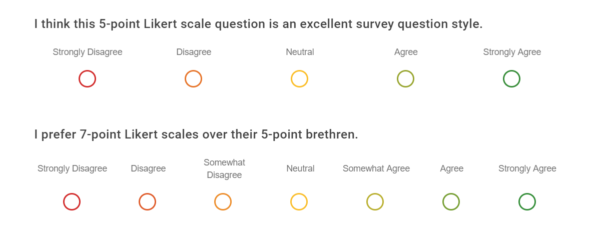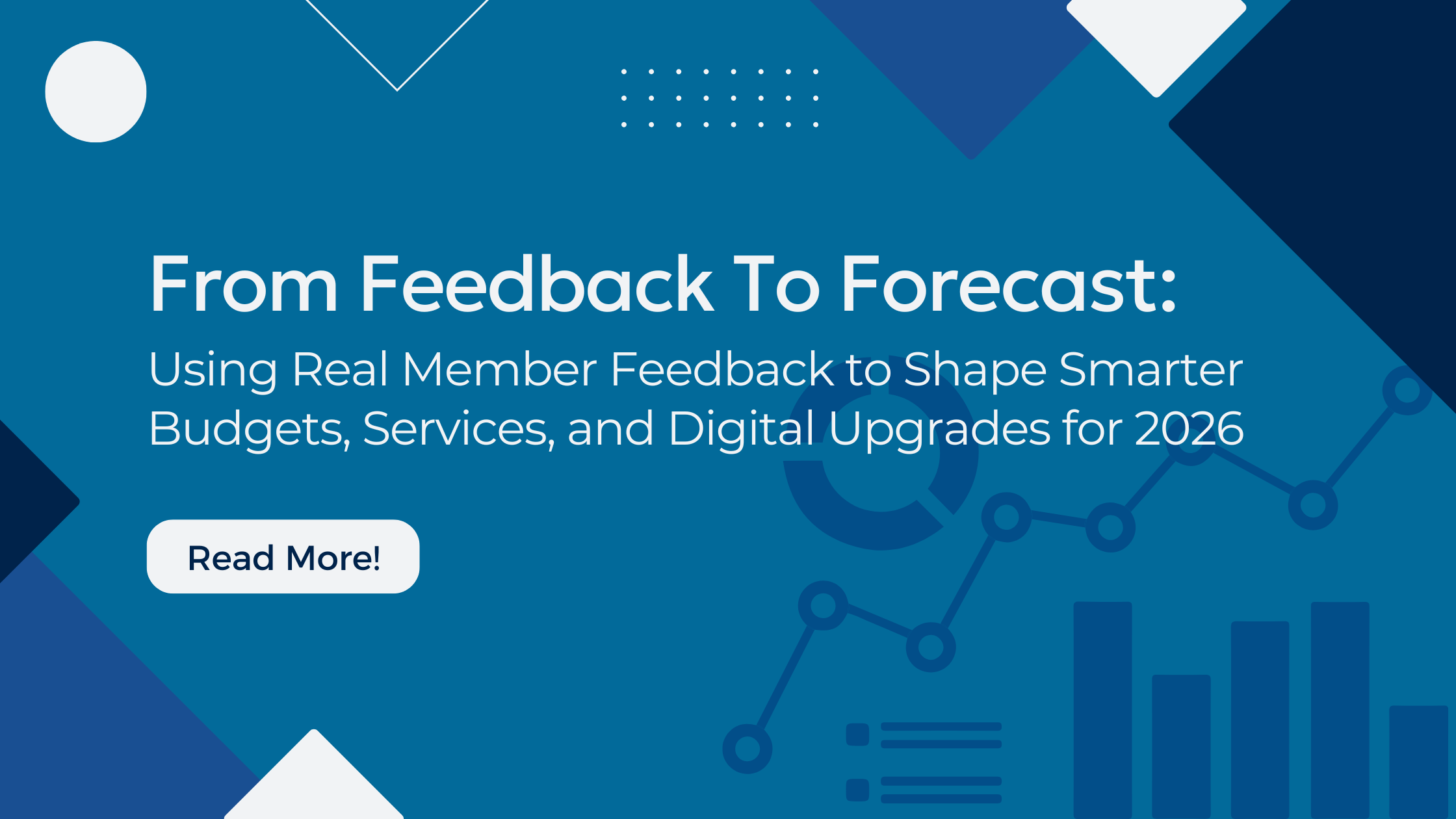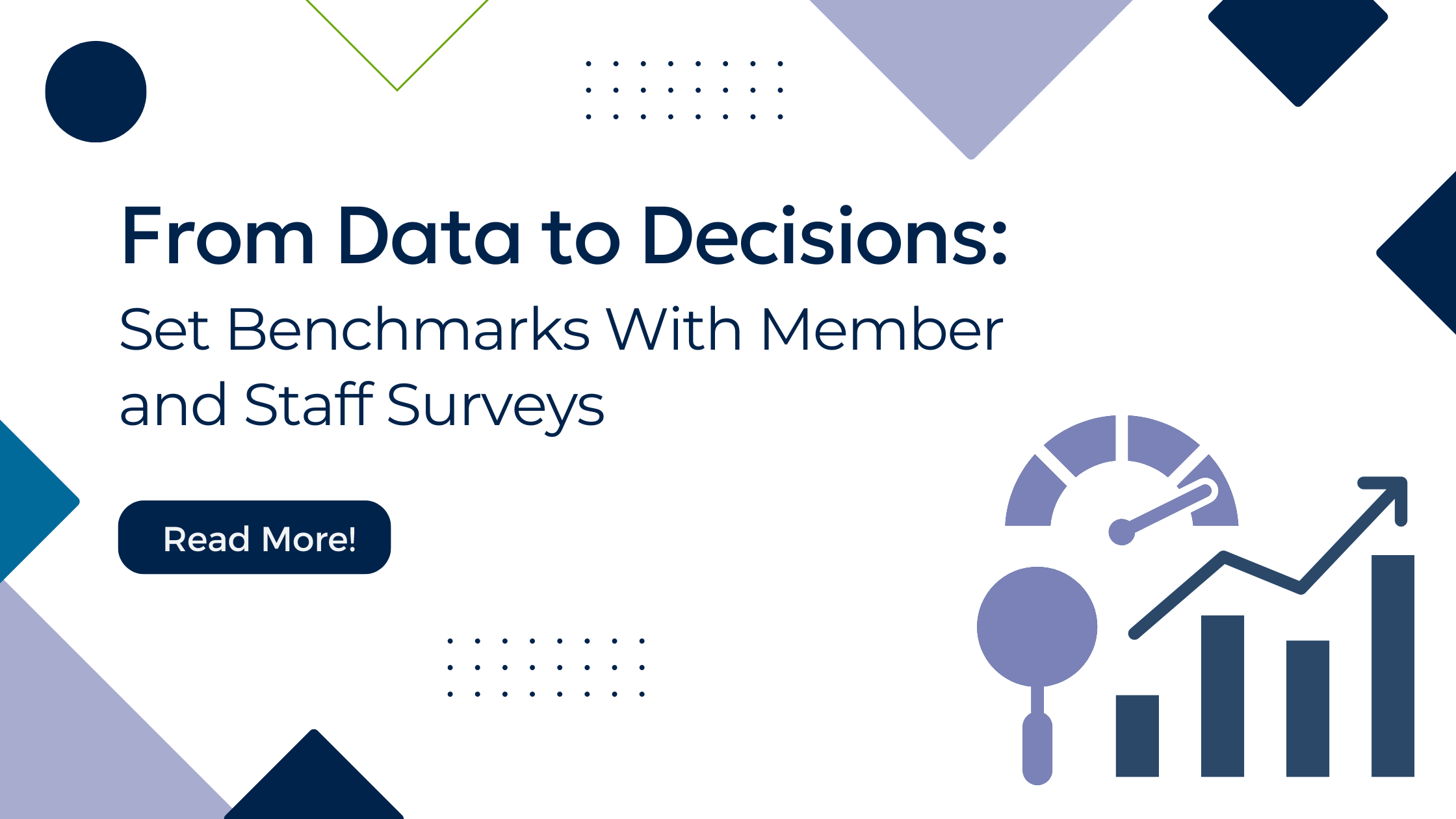Surveys and questionnaires often include many different types of questions. Some of them are multiple choice, some require written answers, and some present scales. One such scale is the Likert scale. But what is the Likert scale, and what are the benefits of it?
Especially in surveys, the Likert scale is a very common question format. If you’re curious about why it got so popular—or if you’d like to see how you can use it in a survey—then read on!
(I wrote about the Likert scale last week—this week’s post is a follow-up blog. If you’d like to read about more about what the Likert scale is, just follow the link!)
What Is the Likert Scale?
Just briefly: the Likert scale is a psychometric survey question format designed to quantify intensity of emotion. It presents a scale that usually ranges from 1–5 or 1–7, but other ranges are not uncommon.
The Likert scale usually asks the participant to what degree they agree with a particular statement (although again, other verbiage is not uncommon). It usually looks something like this:

Likert scales provide an uncomplicated scale for valuation. So, at the risk of being obvious, the immediate benefit of Likert scale is that they allow surveyors to quantify the intensity of respondents’ responses. In that sense, they’re remarkably effective. But there’s more.
Evaluating Specific Products and Services
One of the main benefits of the Likert scale is that it provides a predictable and easily understood scale by which to evaluate products and services.
For example, in the credit union industry, new products and services pop up frequently. Moreover, existing products and services change quickly with fluctuations in market rates and technology.
Likert scales offer a simple way of asking people if they liked a product or service:
“I like the new mobile banking application,” or “I felt I got a fair rate on my auto loan.”
Then, strongly disagree? Neutral? Agree?
You get the idea.
Evaluating Experiences
Credit unions who want to track member experience (MX) should definitely consider using Likert scales. One of the benefits of Likert scales is that they’re flexible enough to fit that purpose.
You can simply prompt survey respondents with Likert-style questions:
“My loan officer helped me find the right loan for me,” or “my teller was courteous and professional during my recent branch visit.”
Then, disagree? Agree? Strongly agree?
There’s a theme here.
Tips for Getting the Most from Your Likert Scale Questions
We’ve actually written pretty extensively about credit union survey tips and survey strategy in general, but it’s worth repeating some basics here:
You may not see the benefits of the Likert scale without following these best practices.
- Label the Likert scale: make sure each point on the scale has a “value.” Make sure the question, statement, or prompt is clear. Categorize the question to remove all doubt.
- Use odd-numbered scales: some Likert scales—and some non-Likert survey scales—use even-numbered scales. However, even scales don’t allow for a neutral or middle-ground option. Although forcing respondents to “pick a side” may seem helpful, it’s antithetical to the point of Likert scales! After all, if you’re trying to quantify emotion, you’ll need an available response for people who don’t feel strongly in any direction.
- Encompass all possible responses: when you put together a Likert scale, keep it balanced and give space for intensity. For starters, don’t skew the answers to get the kind of answer you want (e.g. start at “neutral” and end at “very strongly agree,” but with no options for “disagree). Basically, make sure your Likert answers don’t limit anyone’s ability to accurately express themselves.
Following these tips will make sure that you get all the benefits of your Likert scales.
The Real Benefits of Likert Scales
You can see how people feel about Likert scales: they like them. They’re recognizable and easy to understand, which means that people don’t get frustrated with them on surveys.
That sort of appreciation can increase your survey response rate. Not bad for one question type!
And of course, using Likert scales will help your credit union track MX! Don’t underestimate the value of knowing how your members feel.
If you’d like to read more about credit union surveys and survey strategies, follow the links below!




